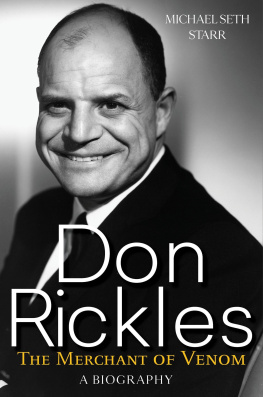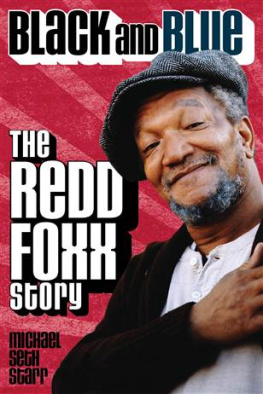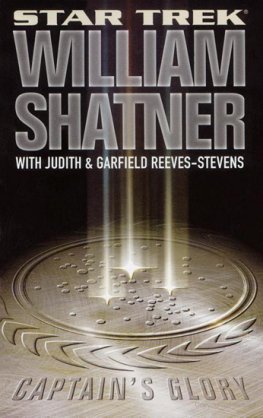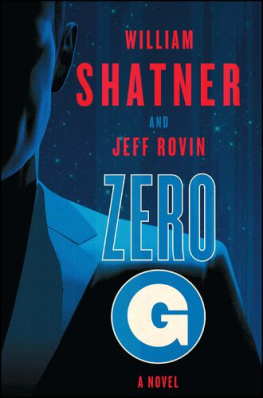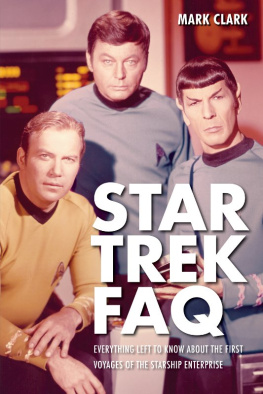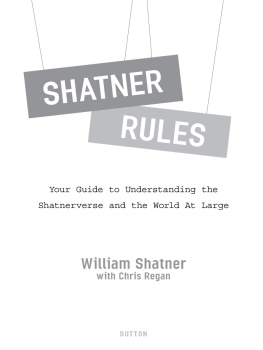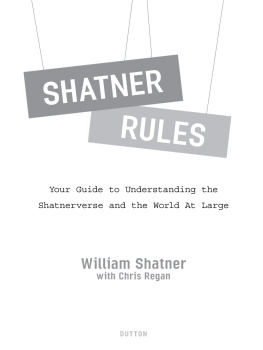Producer Joel Katz knew his upcoming television series, For the People, was dead on arrival as it sped toward its premiere on CBS in January of 1965.
That was a shame, Katz thought, since the series, a legal drama created by future Cool Hand Luke director Stuart Rosenberg, boasted an unusually strong pedigree. Its two stars, William Shatner and Jessica Walter, were young but seasoned.
Shatner, thirty-three years old and a Shakespearian-trained actor, had a decade of live television and series work on his resume and several big-budget Hollywood movies under his belt. He was also a hot Broadway commodity, coming off successful starring roles in The World of Suzie Wong and A Shot in the Dark and three guest-starring appearances on The Defenders, a popular CBS series executive-produced by Herbert Brodkin (who was also the executive producer of For the People).
Shatner was confident in his newest television role as earnest assistant district attorney David Koster, fighting the good fight in the labyrinthian New York City legal system. Ive been in a lot of shows headed for Broadway, and theres a smell of success about the hit ones. I sense the same about this TV series, an excitement on the set, a feeling of victory, he said. One week before the premiere of For the People, Shatner, looking dapper in a tuxedo, promoted the show, appearing as a guest panelist on the CBS television game show Whats My Line? alongside Kitty Carlisle (filling in for Arlene Dahl), Bennett Cerf, columnist Dorothy Kilgallen, and host John Daly.
(Its on right after Ed Sullivan, Shatner told Daly about For the People. That weeks mystery guest on Whats My Line? was actor Jack Lemmon, who was there to promote his new movie, How to Murder Your Wife. He was correctly identified by a blindfolded Carlisle.)
Jessica Walter, twenty-four, had also appeared on The Defenders and on several other high-profile television shows, including The Alfred Hitchcock Hour, Ben Casey, and Route 66. She, too, was a Broadway veteran, most recently starring in the comedy A Severed Head. The For the People cast also included, most notably, Howard Da Silva and Lonny Chapman, who had over forty years of acting experience between them.
But For the People was a midseason entry on the CBS schedule, replacing the Craig Stevens series Mr. Broadway, which premiered the previous fall to disappointing viewership numbers and was cancelled after thirteen episodes. The networks executives, showing little faith in For the People, slotted the series to air on Sunday nights at nine opposite NBCs Bonanza, the top-rated series on television.
Katz still felt the sting over fifty years later.
CBS just needed a thirteen-week fill-in, and they had something big coming in behind it, he recalled. They didnt promote [For the People]. It was probably predestined to have just that one run. It did well enough for [CBS] to say, Okay, moving on. The series premiered on January 31, 1965, and in late March, CBS pulled the plug, burning off the remaining episodes, which aired through mid-May. The network ultimately replaced For the People with its veteran legal drama, Perry Masonand it, too, was demolished on Sunday nights by Bonanza. For the People was opposite Bonanza, which was the most popular show at the time, Shatner said. And Bonanza killed us, so we went off the air after thirteen weeks.
But the television gods work in mysterious ways, and the cancellation of For the People allowed Shatner to explore other opportunities, including a new science fiction series at NBC. A pilot episode for the series had been shot throughout the fall of 1964 and into early 1965, but network executives found it too cerebral, and there were problems with its star, Jeffrey Hunter. NBC officials believed in the project and, in an unusual move, gave its creator, Gene Roddenberry, the green light to shoot a second pilot.
Star Trek was looking for a new leading manand William Shatner was available.
* * *
An acting career didnt seem to be in the cards for William Alan Shatner when he entered the world in Cte-Saint-Luc, Montreal, on March 22, 1931, the first son of Joseph, a clothing manufacturer, and his wife, Ann.
Joseph Schattner was born in Austria in 1898 to Wolf and Freyda Schattner. At the age of fourteen, Joseph became the first member of his large extended Jewish family, which included ten brothers and sisters, to emigrate to North America. In 1912, he boarded a steamship in Austria bound for Montreal, which had a thriving Jewish community that comprised roughly 7 percent of the citys population. Joseph changed his surname to the more Anglicized Shatner and made a living in his new country by holding down several odd jobs, including selling newspapers, before entering the clothing business. He did well enough, those first few years, to bring the rest of his brothers and sisters to Montreal, where they branched out into various lifestyles. Josephs younger brother, Louis ShatnerWilliams unclewas arrested in 1956 for allegedly running a gambling ring in Montreal. He claimed he his lost his life savings in a bad mining investment.
Ann Garmaise, who was seven years younger than Joseph, was born in 1905 into a financially comfortable Jewish family in Montreal. Her parents, Jacob Garmaise and Yetta (ne Kahn), were from Eastern Europe; Jacob emigrated to Canada from Lithuania and Yetta from Germany. The familywhich also included Anns brothers, Max and Bernard, and her sister, Pearlwas relatively well off, and Ann grew into a brash and boisterous young woman who enjoyed being the center of attention. Years later, when her son became famous, she would tell anyone within earshot that Im William Shatners mother, much to his embarrassment. My mother was a bit of a clown and never really pursued her acting in a professional way, but she had talent, Shatners sister recalled.
Joseph and Ann were married in 1926 in Montreal and settled in Notre-Dame-de-Grce, a heavily Catholic, mostly English-speaking middle-class neighborhood in the citys West End. The locals called it NDG for short. They moved into a house at 4419 Girouard Avenue with William and his older sister, Farla. There are Internet records showing that a son, David Shatner, was born to Joseph and Ann in April 1935. David died that December at seven months old and was buried in Back River Cemetery in Montreal. There is no mention of a David Shatner in any of William Shatners official biographies, and Bill has never publicly mentioned or written about a deceased brother, so the veracity of this information is unclear. Farla and Williams little sister, Joy, arrived eleven years later.
Joseph worked his way up in the clothing business by tackling different facets of the trade, from packing boxes to eventually becoming a salesman before starting his own company called Admiration Clothing. The factory was located on 8 Briardale Road in Montreals Hampstead section and manufactured mens suits for French-Canadian storesor, as William Shatner recalled, basically suits for working men who owned only one suit. who worked extremely hard, smoked heavily, and relaxed on Saturday, the Sabbath, when he would recline on the family room couch and listen to the Metropolitan Opera crackling over the radio from New York City.
The tools of Josephs trade were burned into his sons memory; Bill recalled the smell of his fathers factory, the unforgettable aroma of raw serge and tweed in rolled-up bales, mixed with the smell of my fathers cigarettes. Joseph imagined that Bill would, one day, take over the business (after going to college, of course). He gave Bill a job in the factorypacking suits. As a teenager, Bill, dressed in his best suit, would sometimes accompany his father on sales calls to clients in and around the Montreal area (and sometimes to far-flung locales).



